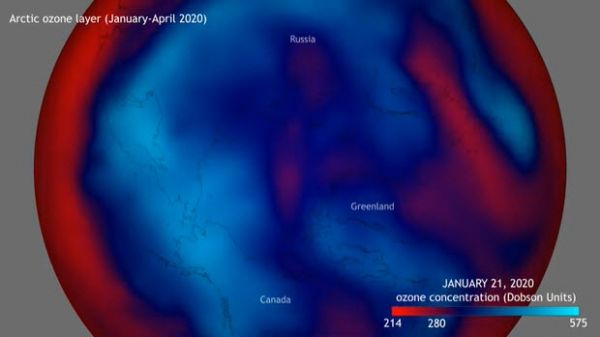The stratospheric ozone layer is a natural barrier to high-energy ultraviolet (UV) light that can cause skin cancer and other DNA damage in people, other animals, and plants. In the late 1970s, scientists discovered that CFCs—short for chlorofluorocarbons—being used in cooling systems and aerosol sprays were damaging the ozone layer. The discovery led to an international treaty to phase out and eventually eliminate their use.
While it isn’t on par with the ozone hole that develops each year over the South Pole, this year’s severe event is a record for the Northern Hemisphere. Since ozone observations began in the 1970s, events like this have only happened two other times, during the winters of 1996-97 and 2010-11. In each case, the extreme ozone loss was the result of unusual weather that kept the Arctic colder and more isolated than normal in late winter.
Continue reading at NOAA Climate
Image via NOAA Climate


